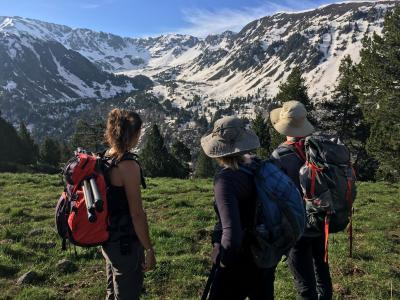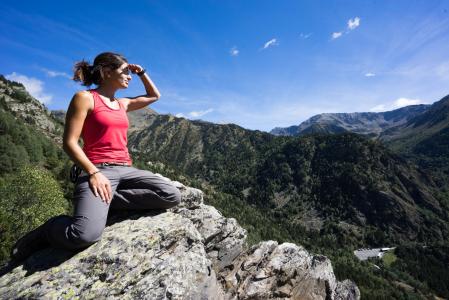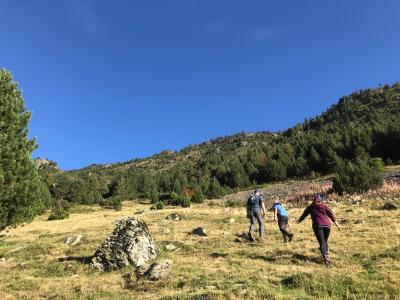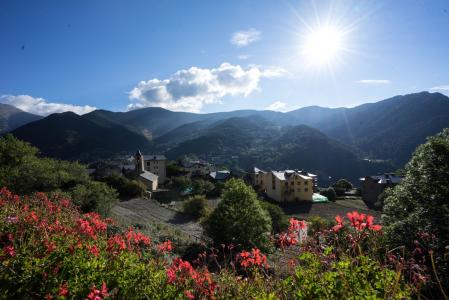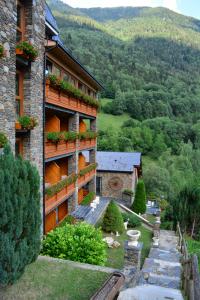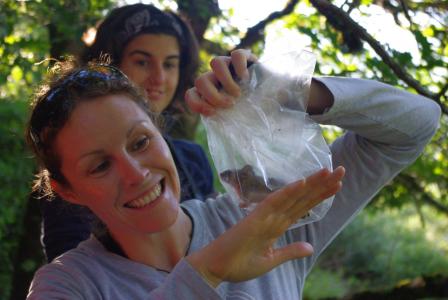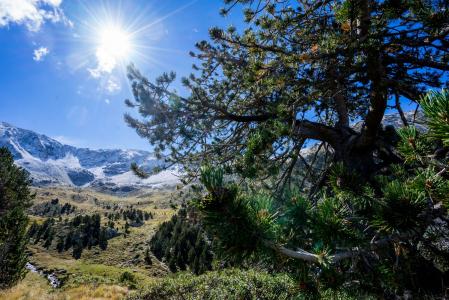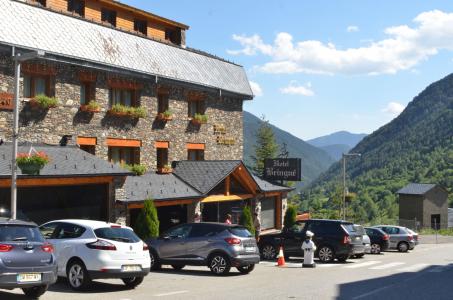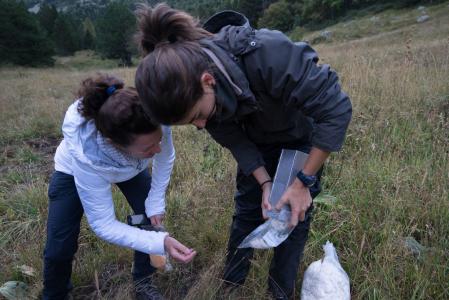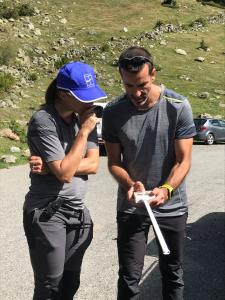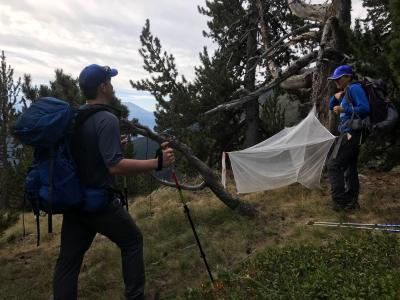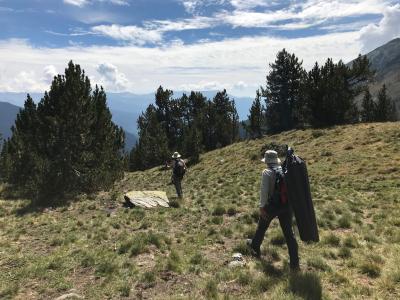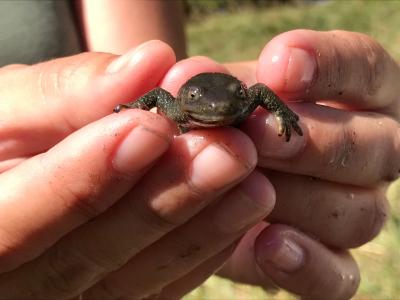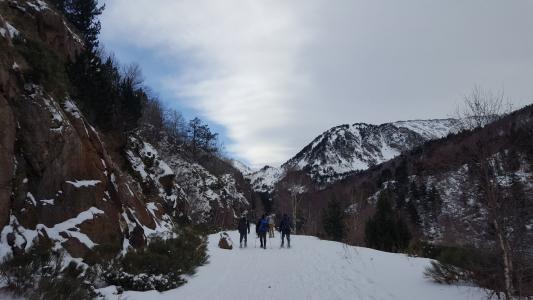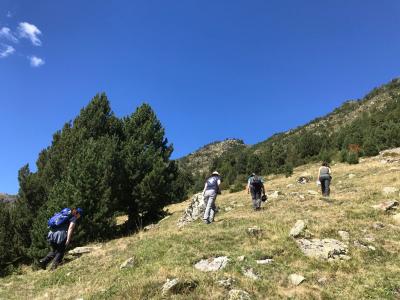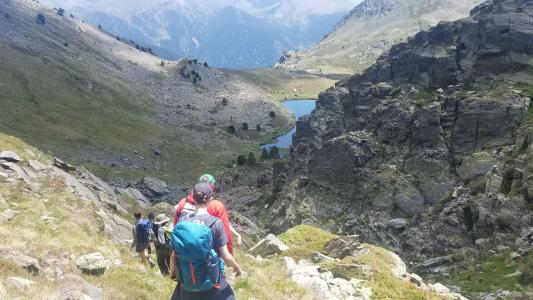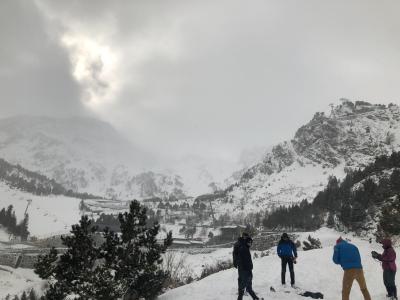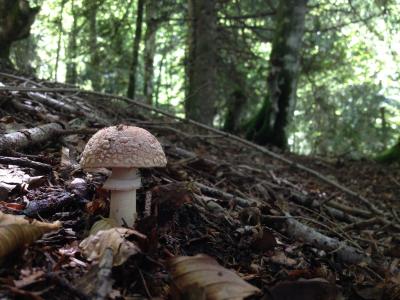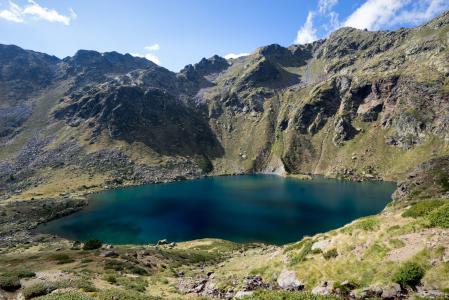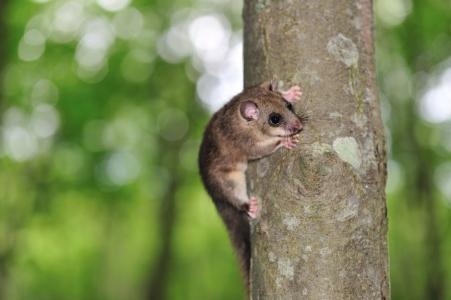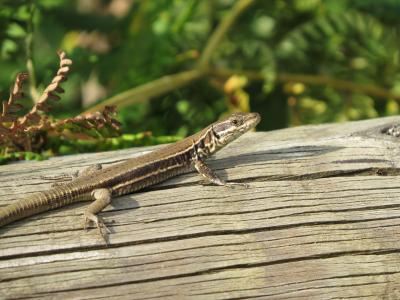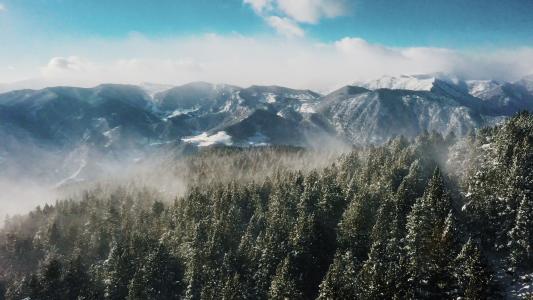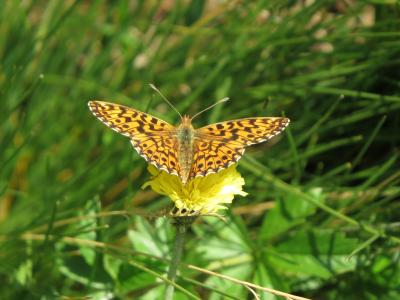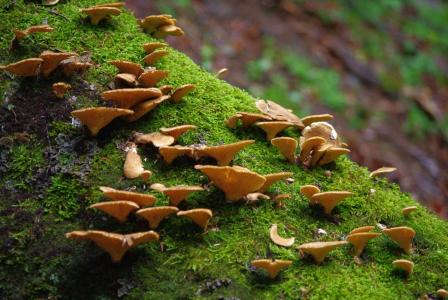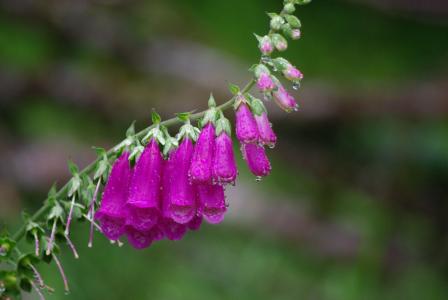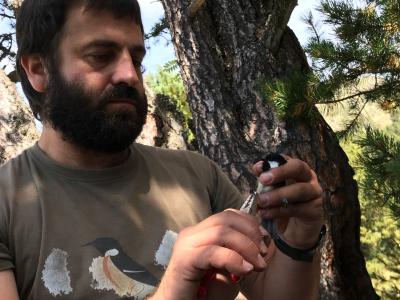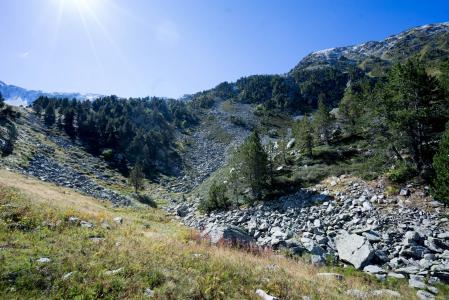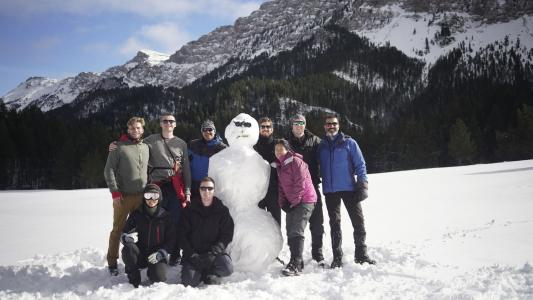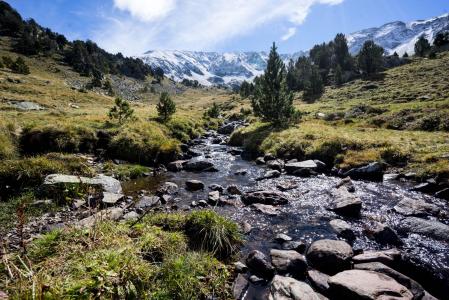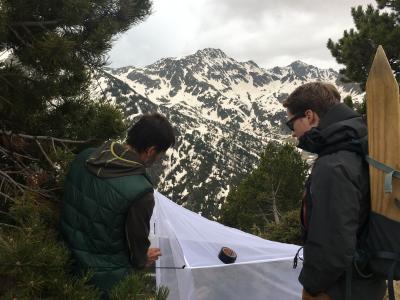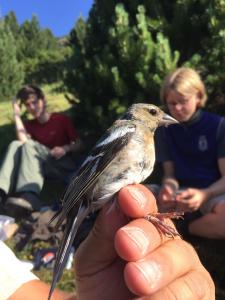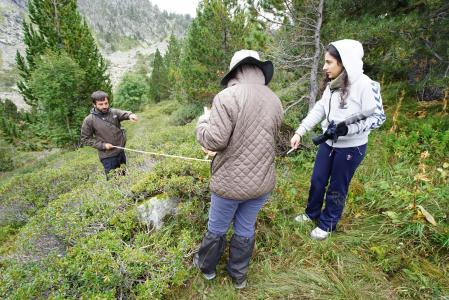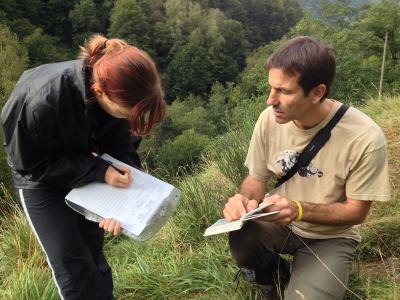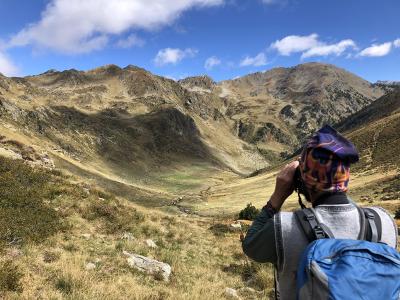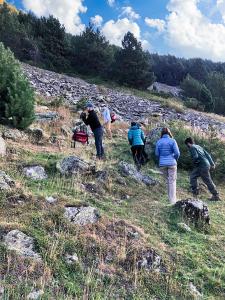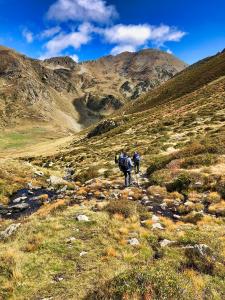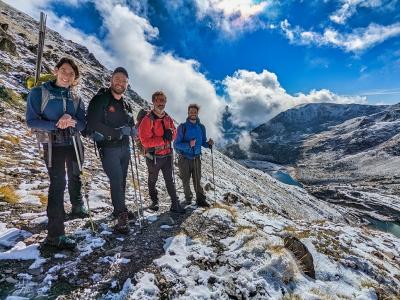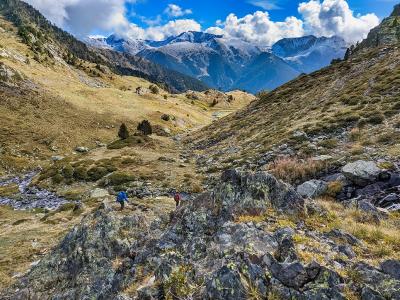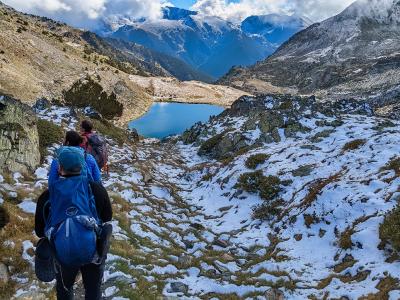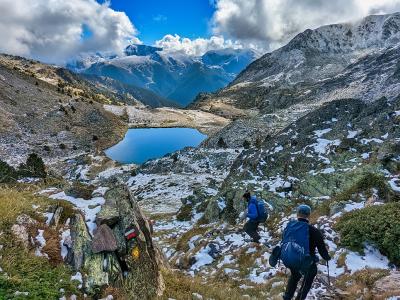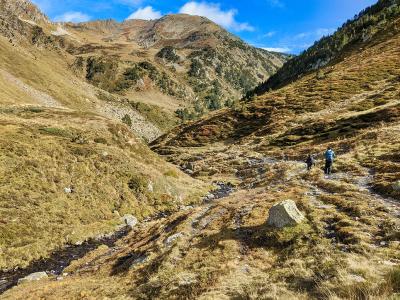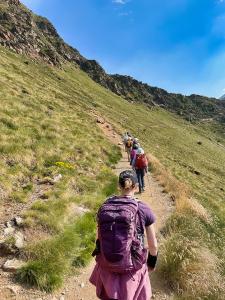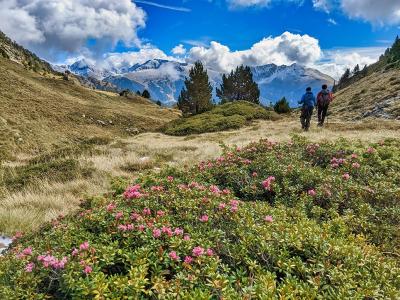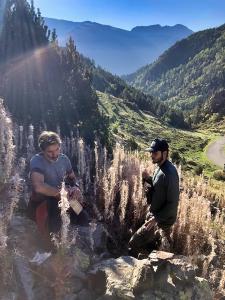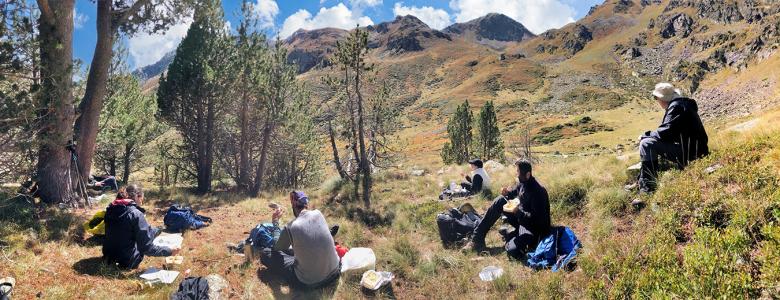Please read the following information carefully before leaving for your expedition.
.
.
Wildlife in the Changing Andorran Pyrenees
Expedition Briefing
Quick Navigation: COVID-19 Safety | The Research | Research Aims | How You Will Help | Life in the Field | Accommodations and Food | Project Conditions | Essential Eligibility Requirements | Health and Safety | Project Risks and Precautions | Travel Planning | Additional Resources
Click on the images to view full size!
COVID-19 Safety
You are strongly encouraged to test for COVID-19 before traveling to your expedition, particularly if you are experiencing symptoms. Do not travel if you have tested positive, and call Earthwatch right away for the next steps. Please see earthwatch.org/covid-19 for more information.
The Research
In the high slopes of the Pyrenees, climate change has already begun to alter the landscape. Some species are moving to higher latitudes, and some have started to decline in numbers (Chen et al. 2011, Colwell et al. 2008). The ways humans use the land also cause shifts in the natural order of things, but little research has been done on how people have impacted this particular place. Questions of how climate change and human encroachment continue to alter this alpine world need answers as local organizations work towards sustainable solutions.
Not much is known about the amazing biodiversity of the forests and alpine meadows, and your team will help identify the key species in the ecosystem and how they are changing. Your work will help researchers discover how animals are faring and how to best manage key species. Understanding the timing of such processes—the field of phenology—can help scientists learn if species’ life cycles are becoming out of sync with each other, which could have serious consequences for the health of this ecosystem.
Wildlife in the Changing Andorran Pyrenees
Research Aims
Mountain environments are among the most important ecosystems on Earth. Often referred to as water towers because of their downstream benefits to rivers and other essential water systems, mountains also provide other key resources to humans and wildlife alike (Jetz et al. 2004). Your powers of observation will be vital to researchers as they try to answer the basic who, what, when, where, why, and how of this ecosystem: Who (which plants and animals) lives there? What are these species up to? When and where are they observed? Why are some species present in certain areas and absent in others? And finally, how do the life stages of these species intertwine to make this ecosystem function? Together, we will track this incredible diversity of plants and animals and help increase human understanding of the complex network of interactions among them.
Armed with such knowledge, scientists and local organizations can help better manage the fragile environment of the Pyrenees and mitigate the impacts of climate change and other human activities. With an intimate but also broad knowledge of the local ecosystem, they can help shape conservation policies to ensure that wild flora and fauna, as well as humans, can thrive.
Wildlife in the Changing Andorran Pyrenees
How You Will Help
This expedition will allow you to try various field research techniques, focusing on many species. The activities below may vary depending on the specific needs of the scientists. Specifically, teams will help
- Large Mammals (spring equipment set-up, summer, and autumn expeditions). Will large mammals (ungulates and carnivores) be affected by the abandonment of rural activities and increasing temperatures? Your team will check several camera traps installed in the study region, which continuously take photos of all animals that pass by and download images. These cameras can offer great insight into the area’s wildlife because they’re installed far from populated and oft-visited regions. Hence, the animals’ behavior is less likely to have been shaped by humans. When you spot wildlife—a raptor soaring overhead, perhaps, or one of the abundant foxes, deer, or alpine chamois in the area—the group will stop to make observations. You’ll also walk shorter transects to look for traces of animal activity, like tracks and scat.
- Small Mammal Diversity and Abundance (summer and autumn expeditions). Shrews, mice, and voles are good indicators of biodiversity and the impacts of global warming; At the same time, some species will move to higher elevations, abandoning lower elevation territory entirely; others will expand their range to include cooler altitudes (Moritz et al. 2008). You’ll keep an eye on how small mammals in these mountains are faring and reacting to environmental changes by helping scientists humanely capture individual mammals, then tag them and record data, including weight, age, sex, and breeding condition. You won’t handle the critters yourself, but you will get close to the action to assist the experts as they work.
- Passerine Birds Phenology (spring and summer expeditions). How will forest birds that live at the tree line be affected by global change? Your team will monitor nest boxes installed throughout the research area to look for signs that birds are using them. Scientists expect breeding patterns to change due to climate change, so keeping an eye on nesting activity will reveal if and when such shifts occur.
- Bird Diversity and Abundance (spring, summer, and autumn expeditions). Are birds living at the highest elevations changing their morphological traits? Is bird diversity at these elevations changing? Birds will be banded almost daily at low and high elevations so scientists can calculate changes in the morphology and diversity of alpine bird species, complementing existing data taken by the Andorran government.
- Adult Tree Growth (spring, summer, and autumn expeditions). How are trees responding to increasing temperatures? Are their growth rates higher and/or longer, or does growth stop earlier due to increasing drought events in the summer months? Two kinds of dendrometers (with different resolutions) will be installed to follow tree growth at low and high elevations. You will help the scientists gather the data from these dendrometers and help review the gathered data at the accommodations.
- Soil Studies (spring, summer, and autumn expeditions). How are the changing environmental conditions at high elevations (namely temperature and precipitation) affecting organic matter decomposition (soil respiration)? To answer this important question and calculate carbon balances, we will use a standard methodology to assess soil organic matter decomposition, which entails observing the decrease in the mass of tea bags (Keuskamp et al., 2013). Teams will collaborate to install the tea bags in May and July, and subsequent teams will collect them in July and September. At the accommodations, tea bags will be cleaned, labeled, and classified to be taken to the lab to dry.
- Seedling Growth (spring, summer, and autumn expeditions). An experiment has been set up to study the growth of Scots and Black pine seedlings at two elevations. Both seedlings species were planted in 2019 at low and high elevations (a total of 1800 seedlings per species), and morphologic measurements will be done during each expedition.
Wildlife in the Changing Andorran Pyrenees
Life in the Field
Upon arrival, you’ll receive a safety briefing, a presentation on the project's goals, and a framework for all the project’s key protocols. When we begin our fieldwork, project staff will introduce and demonstrate each new task; we’ll work with you until you’re comfortable with any new activities. We will also supervise to ensure data quality. Your days in this stunning environment will vary. Sometimes, you’ll work at a research site close to home; on other days, you'll venture into the mountains at the highest elevations. Throughout the expedition, you'll see much of the countryside, from wooded mountainsides to quiet valleys and open pastures.
DAILY ACTIVITIES
Weather and research needs can lead to changes in the daily schedule. We appreciate your cooperation and understanding.
You’ll generally rise early and have breakfast, then head into the field. You’ll take breaks throughout the day, including a stop for lunch. In the late afternoon, the team will return to the hotel to rest, record data, and/or identify photos of animals taken by camera traps. Evenings will include a communal dinner around 8:00 p.m. and time to rest or learn more about the research. On the last night of the expedition, your team will share a special dinner offered by the Ordino municipality to celebrate all you’ve accomplished.
ITINERARY
(SPRING, SUMMER, AND AUTUMN EXPEDITIONS)
- Day 1: Arrival
- Meet the team, unpack, and settle in before having a group dinner
- Safety briefing and an Introduction to the research
- Days 2–4: Training and Fieldwork
- Learn field methodologies (carried out directly in the field)
- Carry out sampling activities
- Day 5: “Day Off”
- Free time in El Serrat, help staff with some activities
- Days 6–8: Research
- More data collection and work in the field
- Special dinner on the evening of the 8th day
- Debrief and discuss how the data collected will be used to better understand and manage the research areas.
- Day 9: Departure
Recreational Time: In most cases, you will have some free time at the end of the afternoon activities and before dinner. You will have the chance to rest and relax in your room. In bad weather, organized groups can stay at the hotel and help organize some data.
Wildlife in the Changing Andorran Pyrenees
Accommodations and Food
* Please note that not every expedition has couples’ or singles' accommodations available. Please call or email Earthwatch to check availability before reserving your space(s) on the team.
SLEEPING
You will stay at the Hotel Bringué in the Valley of Ordino, Andorra. All rooms are climate-controlled, and bedding and basic toiletries are provided. Each room has two beds, so volunteers can expect to share their space with another teammate. Rooms will be split by gender. 2-gender couple rooms may be possible to accommodate upon request but are not guaranteed as it will depend on final team makeup. Requests are accommodated when possible in the order they are received on a first-come, first-served basis. Please get in touch with Earthwatch if you are interested.
If you do not wish to share a room, it may be possible to reserve a single room for an additional cost of 275–300 euros to be paid IN CASH IN EUROS ONLY upon arrival at the accommodations. Exact pricing may vary depending on the time of year. Single reservations must be confirmed with Earthwatch in advance and will depend on availability. Please get in touch with Earthwatch if you are interested. Please do not contact the accommodations directly.
* Earthwatch will honor each person’s assertion of gender identity respectfully and without judgment. For both teen and adult teams, where logistics dictate single-sex accommodations or other facilities, participant placements will be made in accordance with the gender identity the participant specified on their Earthwatch Participant form and/or preferences indicated in discussions with Earthwatch.
BATHROOMS
All rooms have hot water showers and conventional toilets. The hotel offers a laundry service with a cost that depends on the quality and quantity of clothes (consider a max cost of 40€). Please bring sufficient clothing to save on washer and dryer costs.
ELECTRICITY
You are welcome to bring electrical equipment. Andorra uses 220–240-volt type F plugs.
FACILITIES AND AMENITIES
The hotel has wireless Internet and access to hiking trails. The accommodations will be the main site for all group activities, including meals, presentations, and relaxation time. Feel free to bring cards and board games.
PERSONAL COMMUNICATIONS
Free Wi-Fi is available at the accommodations. Cell service is also available, but you must check with your carrier to set up international calling in advance.
Please note: Earthwatch encourages volunteers to minimize outgoing calls and immerse themselves in the experience; likewise, family and friends should restrict calls to urgent messages only. Emergency communications will be prioritized.
DISTANCE TO THE FIELD SITE
Research will take place in many different sites within the Valley of Ordino. Elevation ranges from 4,900–8,200 feet, and volunteers should expect varying terrain types and steepness. For any site, volunteers can expect to drive up to 15 minutes and walk between 30 to 90 minutes to reach each location. Distances will vary depending on the team and research needs.
FOOD AND WATER
You’ll eat breakfast and dinner at the hotel restaurant, which features Catalan and French-style food. For lunch, the team will pack sandwiches, fruit, and other snacks to enjoy while taking in the scenery. Goat cheeses are a Pyrenean specialty, along with salads and vegetables. Local meats are also a Pyrenean specialty and will be provided with breakfasts and dinners.
Smoking and alcohol consumption are not permitted on teen expeditions.
TYPICAL MEALS
The following are examples of foods you may find in the field. Variety depends on availability. We appreciate your flexibility.
- Breakfast: Cereals, fruit, bagels, hard-boiled eggs, cheese, yogurt, coffee, tea
- Lunch: One sandwich, a picnic tapper with salad, pasta, rice, and fruit (packed lunches prepared for the field)
- Dinner: Varied menus, including salad, pasta, soups, vegetables, meat, fish, and desserts
- Snacks: Fruit, chips, pretzels, granola bars, etc.
- Beverages: Water (okay to drink from the tap) and different juices. A cup of wine per person is included in the menu. Extra alcoholic drinks are not included.
SPECIAL DIETARY REQUIREMENTS
Please alert Earthwatch to any special dietary requirements (e.g., diabetes, lactose intolerance, nut or other food allergies, vegetarian or vegan diets) as soon as possible and note them in the space provided on your volunteer forms.
This project can cater to vegetarian, lactose-free, and gluten-free diets, but please, we need to know in advance and indicate your preference when filling out your volunteer forms. Vegan diets can be accommodated; however, options will be limited. It is recommended you bring some of your favorite snacks.
Wildlife in the Changing Andorran Pyrenees
Project Conditions
The information that follows is as accurate as possible, but please keep in mind that conditions may change.
Andorra is a landlocked state bordered by France and Spain in the eastern Pyrenees mountains. It is the sixth smallest nation in Europe. While the official language is Catalan, the project will be conducted in English. Due to its location in the Pyrenees, Andorra consists predominantly of rugged mountains, and the average elevation is 6,500 feet above sea level. Andorra has an alpine and continental climate, and its higher elevation means there is typically more snow in winter, low humidity, and cooler days in the summer.
GENERAL CONDITIONS
Please visit Wunderground.com and search for your project location for weather and region-specific information.
Wildlife in the Changing Andorran Pyrenees
Essential Eligibility Requirements
All participants must be able to:
- Walk up to 2–12 km daily over rocky, off-trail, steep (and sometimes very steep) alpine terrain. Elevation gains will vary daily, but they will be around 500m (except in one site, where elevation gain is 900m, where teams are organized accordingly, i.e., not all participants must walk to this site).
- Carry personal daily supplies such as lunch, water, and some small field equipment while hiking (field material will not be heavier than 1.5 kg).
- Get up into and down out of a four-wheel-drive vehicle, minibus, or car and ride, seated with the seatbelt fastened.
- Enjoy being outdoors all day in all types of weather in the potential presence of insects and other wild animals.
- Follow verbal and/or visual instructions independently or with the assistance of a companion.
- Take an active role in one’s safety by recognizing and avoiding hazards if and when they arise (including, but not limited to, those described in Earthwatch materials and safety briefings). Always comply with project staff instructions and recommended safety measures.
- Be able to effectively communicate to the staff if experiencing distress or need assistance.
- Be able to get along with a variety of people from different backgrounds, often in close proximity, for the duration of the team.
- Be comfortable being surrounded by a language and/or culture that is not your own.
Participants will experience daily hikes ranging from 2–12 km across rocky, off-trail, and steep alpine terrain.
Health and Safety
EMERGENCIES IN THE FIELD
Earthwatch has a 24-hour, 7-day-a-week emergency hotline number. Someone is always on call to respond to messages that come into our live answering service.
IMMUNIZATIONS & TRAVEL VACCINATIONS
Please be sure your routine immunizations are up to date (for example, diphtheria, pertussis, tetanus, polio, measles, mumps, rubella, and varicella) and that you have the appropriate vaccinations for your travel destination. Medical decisions are the responsibility of each volunteer and their doctor. Visit the Center for Disease Control and Prevention or the World Health Organization for guidance on immunizations.
If traveling from countries or regions where yellow fever is endemic, you must have a certificate of vaccination.
It is strongly encouraged that you stay up to date with your COVID-19 vaccinations, including receiving booster doses, as applicable.
Wildlife in the Changing Andorran Pyrenees
Project Risks and Precautions
TRANSPORTATION
Only qualified drivers will transfer volunteers in project vehicles; we ensure project vehicles are well maintained. Seatbelts must always be worn. Volunteers are not permitted to drive.
WORKING AT HIGH ALTITUDES
While most of the project tasks will occur at or below 2,500 meters above sea level, volunteers should be aware that they are working in areas with thinner air and may become tired or out of breath. Be sure to hydrate and take breaks frequently. While altitude sickness is unlikely, project staff will be trained to recognize the symptoms and manage issues accordingly.
HIKING
Most activities require walking in an alpine environment during most of the day. Although there will be many stops during these treks, the terrain can be steep or very steep in some sections, and off-trail sections are common each day. Volunteers are asked to have some experience hiking in mountain environments.
GETTING LOST
Staff will count team members frequently and caution you against going off alone. Please inform project staff if you need a moment away from the team. Volunteers will always work in groups of at least two. The scientists always take great care to know where each volunteer works so volunteers can be located quickly.
ANIMALS/PLANTS
Very few animals or plants are dangerous in the region. None of the activities require the manipulation of these species or looking for them, so encounters are likely to be very infrequent. Activities also occur in a region where brown bears live, but the low abundance of this species also makes encounters very rare and unlikely. Volunteers will be taught about these species and what to do in case of encounters.
PERSONAL SECURITY
The region is safe, and volunteers generally do not need to worry about personal security. As a precaution, valuables should not be left in the open and should be stored away when not in use. It is possible to lock valuables in your hotel rooms.
DISTANCE FROM MEDICAL CARE
If you have a chronic condition that could require immediate medical care (e.g., heart condition, kidney problems, severe asthma, etc.), or if you are pregnant, please discuss your participation on this expedition with your physician. Some trails are remote, and medical evacuation will be accessible by helicopter only.
CLIMATE/WEATHER
Dehydration, heat exhaustion, sunburn, and other heat-related illnesses can occur, but you can protect yourself by drinking sufficient water, wearing high-SPF sunscreen, and wearing appropriate clothing. Dehydration from sweating can be a problem; please bring your water bottles that you can easily carry and refill them with electrolyte-replacement packets. At high altitudes, there can be quick weather changes and shifts in temperature. Packing layers will be essential each day. In winter, temperatures can be quite low (expect starting temperatures in the morning to be below 0ºC), so please pay special attention to the packing list.
PROJECT TASKS/EQUIPMENT
Most activities do not require carrying heavy scientific material, and volunteers will only need to help carry small equipment to the field along with their personal items. A 40-liter backpack will be sufficient.
RISK OF COVID-19 OR OTHER RESPIRATORY ILLNESS
Earthwatch strongly encourages you to take precautions to help protect yourself and others from common viral respiratory illnesses, including COVID-19, flu, and RSV: stay up to date with your vaccinations; wash your hands frequently; take steps to improve air quality, for example, by increasing ventilation indoors or gathering outdoors; and use preventative measures to limit the spread if you are sick.
Persons with a higher risk of severe respiratory illness should consult their healthcare provider before participating.
Wildlife in the Changing Andorran Pyrenees
Travel Planning
RENDEZVOUS LOCATION
- All teams except the Teen Team: Barcelona-Sants Bus Station, Barcelona, Spain
- Teen Team: Barcelona El Prat Airport (BCN), Barcelona, Spain
* Earthwatch will provide additional information to meet your team. Please only book travel arrangements such as flights once you have received further information from Earthwatch.
ABOUT YOUR DESTINATION
Earthwatch strongly recommends that travelers investigate their destination before departure. Familiarity with the destination’s entry/exit requirements, visas, local laws, and customs can go a long way to ensuring smooth travel. The U.S. Department of State's Traveler’s Checklist and Destination Guides are helpful resources. For LGBTI travelers, the U.S. Department of State's LGBTI Travelers page contains many helpful tips and links.
COUNTRY AND PROJECT ENTRY REQUIREMENTS
You are responsible for reviewing and abiding by your destination's entry/exit requirements.
Entry visa requirements differ by country of origin, layover, and destination and do change unexpectedly. For this reason, please confirm your visa requirements at the time of booking and again 90 days before travel. Please apply early for your visa (we recommend starting six months before the start of your expedition). Refunds will not be made for volunteers canceling due to not obtaining their visa in time to meet the team at the rendezvous. You can find up-to-date visa requirements at the following website: travisa.com.
If a visa is required, participants should apply for a TOURIST visa. Please note that obtaining a visa can take weeks or even months. We strongly recommend using a visa agency to expedite and simplify the process.
Wildlife in the Changing Andorran Pyrenees
Resources
FIELD GUIDES
- Mammals of Europe (Princeton Field Guides).
- David W. MacDonalds, Priscilla Barrett
- Birds of Europe (Princeton Field Guides).
- Lars Svenson, Dan Zetterstrom, Killian Mullarney
- Collins Tree Guide. David More, Owen Johnson
- Peterson Field Guide to Animal Tracks.
- Olaus J. Murie, Mark Elbroch, Roger Tory Peterson
PROJECT-RELATED WEBSITE
LITERATURE CITED
- Brand, F. S., R. Seidl, Q. B. Le, J. M. Brändle, and R. W. Scholz. 2013. Constructing consistent multiscale scenarios by transdisciplinary processes: the case of mountain regions facing global change. Ecology and Society 18(2): 43.
- Caradonna PJ, Iller AM, Inouye DW, 2008. Shifts in flowering phenology reshape a subalpine plant community. PNAS 111(13): 4916–4921.
- Colwell RK, Brehm G, Cardelus CL, Gilman AC, Longino JT. 2008 Global warming, elevational range shifts, and lowland biotic attrition in the wet tropics. Science 322, 258–261.
- Dawson TP, Jackson ST, House JI, Prentice IC, Mace GM. 2011. Beyond Predictions: Biodiversity Conservation in a Changing Climate. Science 332: 53–58
- Elsen PR, Tingley MW 2015 Global mountain topography and the fate of montane species under climate change. Nature Climate Change 5, 772–776
- Forero-Medina G, Terborgh J, Socolar SJ, Pimm SL (2011) Elevational Ranges of Birds on a Tropical Montane Gradient Lag behind Warming Temperatures. PLoS ONE 6(12): e28535. doi:10.1371/journal.pone.0028535
- Goulson D. Bumblebees: behaviour and ecology. Oxford University Press.
- Harsch MA, HilleRisLambers J. 2014 Species distributions shift downward across western North America. Global Change Biology
- Huber, R., H. Bugmann, A. Buttler, and A. Rigling. 2013. Sustainable land-use practices in European mountain regions under global change: an integrated research approach. Ecology and Society 18(3): 37.
- Jetz W, Rahbek C, Colwell RK, 2004 The coincidence of rarity and richness and the potential signature of history in centres of endemism. Ecology Letters 7, 1180–1191
- Keenan T, Richardson AD 2015 The timing of autumn senescence is affected by the time of spring phenology: implications for predictive models. Global Change Biology doi:10.1111/gcb.12890
- Keuskamp et al. 2013. Tea Bag Index: a novel approach to collect uniform decomposition data across ecosystems. Methods in Ecology and Evolution, 4:1070–1075
- Kolbert, E. 2010. Field Notes from a Catastrophe: Man, Nature, and Climate Change. Bloomsbury USA 320 pp
- Kearns CA, Thomson JD, 2001. The natural history of bumblebees. University Press of Colorado.
- Komac, B, Pladevall, C, Peñuelas J, Conesa JV, Domènech M. 2015. Variations in functional diversity in snowbed plant communities determining snowbed continuity. Plant Ecology 216:1257–1274
- Mason et al. 2014. Environmental change and long-term body mass declines in an alpine mammal. Frontiers in Zoology 11:69
- Moritz C, Patton JL, Conroy CJ, Parra JL, White GC, Beissinger SR, 2008. Impact of a Century of Climate Change on Small-Mammal Communities in Yosemite National Park, USA. Science 322, 261–264
- Ripple WJ et al. 2014. Status and Ecological Effects of the World’s Largest Carnivores. Science 343: 152–164
Wildlife in the Changing Andorran Pyrenees
Sign up for the Earthwatch Newsletter
Be the first to know about new expeditions, stories from the field, and exciting Earthwatch news.
.
.
.
